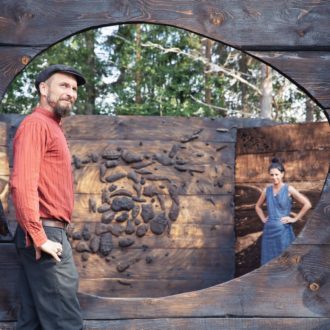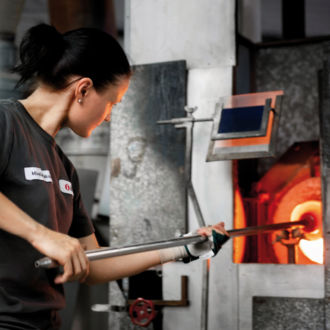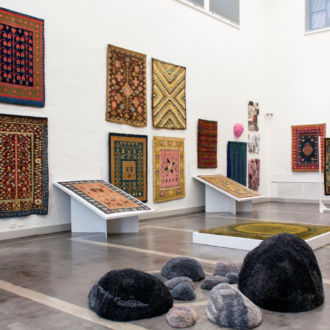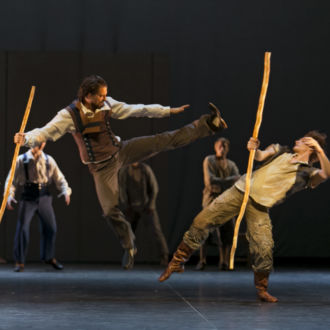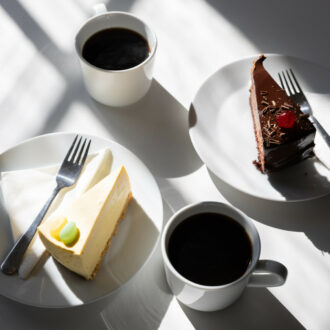If you own a pair of orange-handled scissors, the name Fiskars probably rings a bell. Iconic, ergonomic Fiskars scissors are the classic symbol of the famous brand, whose birthplace is the town of the same name in southern Finland. A must-see event on the Nordic design calendar takes place there: the Fiskars Village Art & Design Biennale.
The second edition of the summer-long biennial (through September 4, 2022) consists of three exhibitions and other events. They weave together design, architecture and contemporary art, offering the perfect excuse to visit the historic foundry town turned creative hub.
On arrival in the village, visitors see a meadow of minimalistic cabins. The portable ecohomes are part of the House by an Architect exhibition curated by Kari Korkman, the founder and director of the biennial.
Participants had to meet the challenge of designing a sustainable wooden home no larger than 30 square metres (320 square feet). Architectural innovators including Studio Puisto, Ateljee Sotamaa and the Aalto University Wood Studio took on this extreme test of small-space design skill.
Korkman believes demand for space-efficient mini-homes will grow in the future. “Being easy to relocate, they can serve as anything from a nature retreat to a remote office in your backyard,” he says.
Invisible beauty
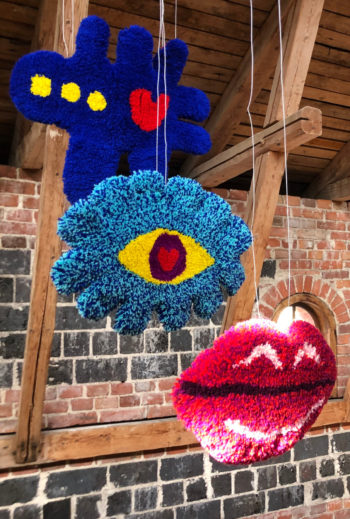
These hand-tufted wall rugs by Matilda Palmu are part of the Knots & Knits exhibition in Fiskars.Photo: Silja Kudel
Installed in the rustic loft of the historic Granary is Knots & Knits, the latest chapter in the U-Joints research initiative spearheaded by curator and teacher Anniina Koivu and architect Andrea Caputo. Their project celebrates the invisible connectors that hold the world together.
“Joints, clamps, glues, springs and ropes – these hidden components rarely receive attention, but they are the essence of great design,” says Koivu. “Excellence resides in crafting, often in the parts you can’t see. In this exhibition, we want to give them visibility.”
From traditional baskets to contemporary pieces by top designers such as Ronan & Erwan Bouroullec and Hella Jongerius, each exhibit tells a story.
For example, did you know that the Adidas logo began with running shoes by the Finnish brand Karhu? Gold medallist runner Paavo Nurmi first wore them at the 1920 Olympics. Adidas founder Adi Dassler spotted Karhu running shoes and their three-striped logo at the 1952 Olympics in Helsinki.
“The world was intrigued by this magical shoe, as it was believed to make athletes run faster,” says Koivu. “The magic comes down to the stitching, which is concealed by three stripes. When Karhu’s salespeople visited Frankfurt, they sold the patent to Adidas – for a pittance and few bottles of schnapps.”
Whispers of excellence

Once the site of a foundry, the village of Fiskars and its idyllic surroundings are now home to a 600-person community that includes numerous artisans and creatives.Photo: Silja Kudel
Next door in the old Copper Smithy is the exhibition Hidden – Forms of the Senses, organised by the Onoma Cooperative, whose members are local artists, designers and artisans.
Curator Laura Sarvilinna describes the show as nothing less than a “manifesto for multisensory experience.”
Inviting moments of slow, aesthetic indulgence, the exhibition offers a quiet antidote to the sensory overload of the modern world. The featured exhibits run a wide gamut, from leading Finnish contemporary artists Elina Brotherus and Grönlund-Nisunen (Tommi Grönlund and Petteri Nisunen) to immaculately crafted pieces by glass artist and sculptor Camilla Moberg and ceramicist Riitta Talonpoika.
The biennial’s three exhibitions complement each other beautifully, encouraging visitors to take a meditative moment and appreciate details that whisper rather than scream for attention.
Fiskars is roughly a one-hour drive west of Helsinki. Alternatively, you can catch the bus or train to Karjaa and then take a taxi or local bus the remaining 15 kilometres (nine miles). The scenic Ratavalli cycle route from Karjaa to Fiskars is warmly recommended.
By Silja Kudel, June 2022

